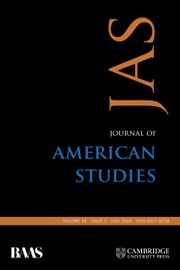At first glance, Sari Edelstein's Adulthood and Other Fictions would seem to strike a blow for adulthood itself, asserting the importance of this particular category within the subfield of age studies, which has heretofore focussed mostly on childhood. But to read the book this way, it soon becomes clear, would be to miss Edelstein's central point, which is that neither adulthood nor any other period of life exists as a coherent category, but only as a fiction. As the seat of social and political privileges in American culture, adulthood is like an exclusive club whose gates have long been guarded against intrusion by white women, people of color, and those whose bodies do not conform to the strictures of capitalism. But if “[a]dulthood is a fiction,” Edelstein explains, then fiction has power to destabilize it (1). Reading a wide range of novels alongside other forms of cultural matter, Edelstein demonstrates that authors like Herman Melville, Louisa May Alcott, Harriet Jacobs, and Henry James “wielded literature as a tool for reimagining the meanings attached to age” (71).
The five chapters of Edelstein's book form a catalogue of such reimaginings. Chapter 1, “May I Never Be a Man,” considers Melville's Redburn as a “failed Bildungsroman” that destabilizes conventional age scripts, and then casts “Bartleby” as the story of one man's refusal to “identify with normative manhood” (28, 41). This is followed by chapter 2, “Peculiar Forms of Aging in the Literature of U.S. Slavery,” which analyses Frederick Douglass and Jacobs, as well as numerous interviews recorded by the Federal Writers Project, to recover both slavery's exploitation of the age metric and enslaved people's use of superhuman longevity to escape that stultifying system. Chapter 3, “Little Women, Overgrown Children, and the Problem of Female Maturity,” finds white women characters, specifically those of Alcott's Little Women and Charlotte Perkins Gilman's What Diantha Did, boldly confronting their exclusion from the full rights of maturity. Chapter 4, “Over the Hill and Out of Sight,” rethinks regionalist depictions of old age as “inherently oppositional to the demands of power, capitalism, and gender,” drawing evidence from Mary E. Wilkins Freeman and Sarah Orne Jewett (119). In chapter 5, “Beyond Mastery,” Edelstein shows us James, the acknowledged “master” of American letters, problematizing the distinction between “child” and “adult” with What Maisie Knew (15). A brief Coda, “The New Old Age,” invokes Charles Chesnutt to summarize the book's most paradigm-shifting claim: “adulthood is in many ways an illusory status, a perpetually receding horizon, promising stability, recognition, and closure. For those that resist its appeal or recognize its impossibility, a multitude of other life narratives become conceivable” (145).
Perhaps the most impressive quality of Adulthood and Other Fictions is its unremitting dedication to treating the topic of age intersectionally. “There is no universal experience of any age,” Edelstein asserts at the close of this book, following chapters that have abundantly demonstrated age's inflection by factors such as gender, race, and geographic region (145). Also impressive is the book's truly thoroughgoing grasp of old age as a continuum. Edelstein smartly sidesteps the trap of naming her various chapters after stages of life, explaining that such a program would only reify the very categories that her analysis proposes to unsettle. But while the many shades of American biopower are rendered with great care and nuance, the world beyond these national boundaries is not remarked upon. At times the reader could wish for some indication of how and where the construction of aging in nineteenth-century American literature differs from the same process in other, contemporaneous traditions. Notwithstanding Dickens's world-historical contributions to the Bildungsroman and its ideology of maturation, for example, his novels are densely populated with little women, overgrown children, and other chimeric characters (or “mermaids,” as Little Dorrit calls them) who defy age normativity. How differently do these experiments signify than American examples of the same period?
Edelstein's book wears its scholarship on its sleeve, but avoids needless gesticulating. While carefully locating her own work in relation to queer theory, disability studies, and chronobiopolitics, among other fields, she also provisions future scholarship on the subject of age, as when she declares that “certainly an entire book remains to be written on old age alone” (13). Adulthood and Other Fictions represents a learned, rigorous, and eloquent theorization of age in America – highly impressive in its own right, and conducive to future advances along the same line.



